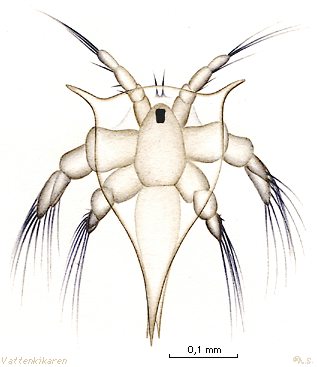|

Distribution in scandinavian waters
|
Maximum length: 0,9 mm. Compare
with the size of a hair.
Appearance: Cirripedia nauplius larvae swim with the help of
three pairs of extremities. The foremost two pairs develope first into
antennae. The third pair became components of the upper jaw (mandibles).
In the middle of the frontal area of the carapace the nauplius eye is
situated. Cirripedia nauplius larvae are usually quite distinct with
their triangular shape, long frontal-lateral horns and usually an outgrowth
that projects backwards. Compare with other crustaceans nauplius
larvae.
Depth: From sea-level to unknown depth.
Environment: Pelagic.
Misc: These larvae
are common during the summer and autumn. They catch and eat small organisms
in the water so they grow and slough their shell six times before transforming
into cypris
larvae. Many larvae are eaten by other creatures that eat suspended
particles.
Classification: Cirripedia nauplius larvae are crustaceans under
the arthropod group.
|


